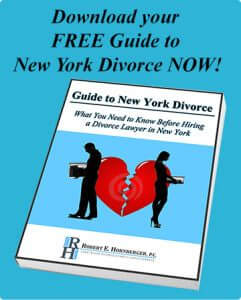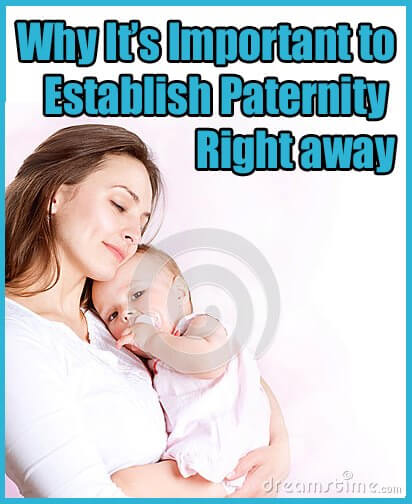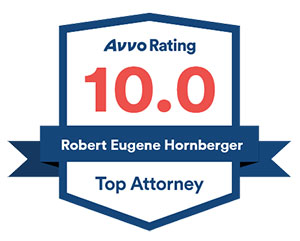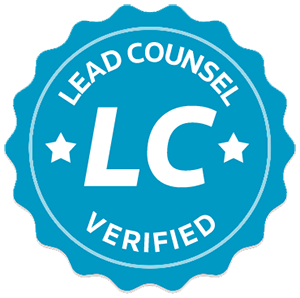Thank You (Paternity)
HOME ABOUT US OUR FIRM FIRM YOUR LEGAL TEAM ATTORNEYS YOUR ATTORNEYS ROBERT E HORNBERGER CHRISTINE M VERBITSKY ANNEMARIE LANNI LAWRENCE M. MARINO BRENDA LYNCH (Of Counsel) PRACTICE AREAS AREAS OF EXPERTISE What’s Involved In Divorce DIVORCE DIVORCE COLLABORATIVE...
Can Disproving Paternity Nullify a Long Island Custody Agreement?
HOME ABOUT US OUR FIRM FIRM YOUR LEGAL TEAM ATTORNEYS YOUR ATTORNEYS ROBERT E HORNBERGER CHRISTINE M VERBITSKY ANNEMARIE LANNI LAWRENCE M. MARINO BRENDA LYNCH (Of Counsel) PRACTICE AREAS AREAS OF EXPERTISE What’s Involved In Divorce DIVORCE DIVORCE COLLABORATIVE...
Child Custody Paternity Testing Tips for Fathers
HOME ABOUT US OUR FIRM FIRM YOUR LEGAL TEAM ATTORNEYS YOUR ATTORNEYS ROBERT E HORNBERGER CHRISTINE M VERBITSKY ANNEMARIE LANNI LAWRENCE M. MARINO BRENDA LYNCH (Of Counsel) PRACTICE AREAS AREAS OF EXPERTISE What’s Involved In Divorce DIVORCE DIVORCE COLLABORATIVE...
Is a Home Paternity Test Legally Admissible in Court?
HOME ABOUT US OUR FIRM FIRM YOUR LEGAL TEAM ATTORNEYS YOUR ATTORNEYS ROBERT E HORNBERGER CHRISTINE M VERBITSKY ANNEMARIE LANNI LAWRENCE M. MARINO BRENDA LYNCH (Of Counsel) PRACTICE AREAS AREAS OF EXPERTISE What’s Involved In Divorce DIVORCE DIVORCE COLLABORATIVE...
Long Island Family Law Attorney: How to Establish Paternity
HOME ABOUT US OUR FIRM FIRM YOUR LEGAL TEAM ATTORNEYS YOUR ATTORNEYS ROBERT E HORNBERGER CHRISTINE M VERBITSKY ANNEMARIE LANNI LAWRENCE M. MARINO BRENDA LYNCH (Of Counsel) PRACTICE AREAS AREAS OF EXPERTISE What’s Involved In Divorce DIVORCE DIVORCE COLLABORATIVE...
Long Island Family Law Attorney & Child Support Lawyer Explains Paternity in Nassau County & Suffolk County, Long Island
As a Long Island Family Law attorney, I see first-hand, how the value of a father figure in a child’s life is immeasurable, yet I see some parents and families questioning or disregarding the value of legally establishing paternity. Under New York law, paternity is recognized as the legal status of being a father. The legal nature of paternity results in certain rights and responsibilities that would not exist absent the legal establishment of paternity, including child support obligations and visitation rights. The importance of establishing paternity lies in protecting the best interests of the child by providing the child with the same benefits as a child born to parents who are married.
How to Establish Paternity in Nassau County & Suffolk County, Long Island, New York
Legal Paternity in Nassau County & Suffolk County, Long Island, New York, is presumed when a child is born of a marriage and is therefore the legal child of both the father and the mother. Accordingly, if the child’s parents were married at the time of birth, paternity need not be established.
In the event a child is born out of wedlock, paternity can be established in two ways in New York. First, and most commonly effectuated, is an Acknowledgement of Paternity. In this situation, both parents sign a “Voluntary Acknowledgement of Paternity” form, in which both parents acknowledge that the man signing the form is the legal father of the child. If there is any doubt as to the identity of the natural father, this document should not be signed. The form must be signed by both parents and witnessed by two people who are not related to either of the parents. This form is usually signed at the hospital soon after the child is born; however, it can also be completed at some other time so long as it is signed by both parents and the independent witnesses in accordance with the law.
Second, paternity can be established by DNA tests, which have been shown to nearly conclusively establish whether an individual is a child’s natural father. Paternity establishment is also a way to determine the identity of the child’s biological father. In a situation where one parent does not wish to sign a voluntary acknowledgement of paternity or the natural father is unknown, a Petition may be filed with the court in Nassau County or Suffolk County. The petition may be brought by the mother, alleged father, the child, or a legal guardian of the child. The petition can be filed anytime from the pregnancy until the child turns 21 years of age. The Petition will ask the court to call both parents and the child into court in order to obtain DNA from the child and the purported natural father of the child. In this case, when the father is identified, the court will issue an Order of Filiation.
For the father, legal paternal status results in a right to legal custody, physical custody, and visitation with the child. The legal father is allowed to petition the court for visitation and custody of the child, which affects his right to be involved in his child’s life. A legal father must also be notified of any potential adoption of the child and will need his legal status as father to have standing to contest an adoption proceeding. Legal paternal status also gives the Mother the right to petition in Nassau County Family Court or Suffolk County Family Court for child support payments from the father.
Benefits of Establishing Paternity in Nassau County, Suffolk County, Long Island, New York
For the child, once paternity is established, he or she is able to have both parents’ names on their birth certificate, receive medical or life insurance from both parents, and receive increased financial security by means of inheritance, Social Security benefits, and child support. A child can also benefit from visitation or custody with his or her father.
The mother of the child benefits from having paternity established insofar as the father becomes legally responsible for the child in terms of financial support (child support), medical needs, and education. Once paternity is established, the mother may petition for child support so that the father will be legally obligated to contribute to the child’s food, clothing, school, day care, medical, and other basic expenses.
If two individuals are not married at the time of the child’s birth, and the father has not signed an Acknowledgement of Paternity, the father does not have legal rights and duties to the child and so paternity must be established. Even if parents live together or plan to marry at some future date, paternity should be established in order for the child and both parents to secure certain rights.
Receive a Free Consultation from an Long Island Family Law Attorney and Child Support Lawyer Experienced in Paternity Issues in Nassau County, Suffolk County, Long Island
If you have questions about establishing paternity or how to protect your or your child’s interests in Nassau County, Suffolk County, or anywhere in New York State, reach out to an experienced family law attorney and child support lawyer who can provide personal advice and assistance. Contact us at 631-923-1910 or fill out the short form on this page and we’ll get right back to you.
Download our Free New York Divorce Guide
 Our 41-page “Guide to New York Divorce: What You Need to Know Before Hiring a Divorce Lawyer in New York” written by an experienced divorce lawyer Long Island’s Robert E. Hornberger, Esq., provides you with real information on the divorce process and the laws it rests upon in the state of New York. This book will help give you a solid foundation upon which you can begin the process of making your family’s, life better. Download your Free Guide to New York Divorce here.
Our 41-page “Guide to New York Divorce: What You Need to Know Before Hiring a Divorce Lawyer in New York” written by an experienced divorce lawyer Long Island’s Robert E. Hornberger, Esq., provides you with real information on the divorce process and the laws it rests upon in the state of New York. This book will help give you a solid foundation upon which you can begin the process of making your family’s, life better. Download your Free Guide to New York Divorce here.

Divorce Lawyer Long Island Stresses Importance of Paternity during your Nassau County or Suffolk County Child Custody & Support Case
 As an experienced divorce lawyer on Long Island, I often have to deal with issues of paternity in Nassau County and Suffolk County cases of child support, custody and visitation when a child is born out of wedlock.
As an experienced divorce lawyer on Long Island, I often have to deal with issues of paternity in Nassau County and Suffolk County cases of child support, custody and visitation when a child is born out of wedlock.
While the parents of children born out of wedlock love them just the same as if they had been born within the legal definition of a marriage, they are not treated the same under New York State law when it comes to child support or child custody. Under the Family Court Act, the parents of a child born out of wedlock are responsible for the support of that child. However, the father of a child born out of wedlock is not financially responsible for that child, nor does he have any rights to custody or visitation of that child, without an Acknowledgement of Paternity or an Order of Filiation.
What is an Acknowledgement of Paternity?
An Acknowledgement of Paternity is a useful document in instances in which both parents agree that the individual seeking to be named the father of a child born out of wedlock is in fact the father of that child. This form, which is generally completed at the hospital upon the child’s birth, contains the full names of the child, the mother and the father, as well as the father’s date of birth and social security number. In order to avoid the potential for fraud, this form must be signed and notarized by both parents, in addition to being witnessed by two (2) uninterested, and unrelated, adult individuals. Once this form is properly completed, the custodial parent will have the right to receive child support on behalf of the child from the non-custodial parent, and the non-custodial parent will have the right to enjoy parenting time with the child away from the residence of the custodial parent. Naturally, this form should not be filled out if either party has any doubt as to who the father of the child is.
Can the Family Court in Nassau County or Suffolk County Assist Me?
In the event either party refuses or is otherwise unwilling to sign an acknowledgement of paternity, the party seeking to establish paternity may file a petition in Nassau County or Suffolk County Family Court. In the event the mother of the subject child is the recipient of public assistance, the Department of Social Services is permitted to commence such an action.
Once in the Nassau County or Suffolk County Family Court on a paternity petition, the mother, the child and the alleged father will be ordered to take a genetic marker, or DNA, test. If the tests indicate there is a ninety-five percent (95%) or greater probability of paternity, a rebuttable presumption of paternity shall be established. In the event the child’s mother or the alleged father wishes to challenge this presumption, it is their burden to disprove paternity. If not disproven, paternity is established.
These types of actions can be commenced from the time the mother becomes pregnant until the child attains the age of twenty-one (21) years.
What if My Child’s Mother was Married to Someone Else at the Time of Our Child’s Birth?
In New York, there is a rebuttable presumption that a child born to a married woman is the child of the marriage. Unfortunately, this presumption does not always ring true of the facts and circumstances surrounding the birth of a child. In such an instance, if either the mother or alleged father challenges paternity, the woman’s husband must be named in the law suit. Thereafter, the parties have the same remedies available to them as set forth above: an acknowledgement of paternity or an order of filiation.
What Does This Mean for Me in Nassau County or Suffolk County?
If you reside in Nassau County or Suffolk County and you believe you are the father of an out of wedlock child, establishing paternity means you now have legal rights to your child. Moving forward with a divorce attorney, Long Island residents will be able to petition the Nassau County or Suffolk County Family Court for custody and visitation rights, and you will be given the option to contest any potential adoption of your child.
If you are the mother of an out of wedlock child, establishing paternity means you have the right to receive child support from the father. An individual cannot be ordered to pay child support on behalf of a child that he or she is not legally tied to.
Most importantly, the establishment of paternity plays a large role in the child’s life. Not only will the child now know he or she has two (2) loving parents, but the child will also be able to obtain both parents’ medical history, and have the potential ability to receive benefits under various federal and state laws on behalf of either parent.
Receive a Free Consultation from an Experienced Divorce Lawyer, Long Island’s Robert E. Hornberger, Esq.
If you have questions about the paternity of a child born out of wedlock, you should consult an experienced local divorce attorney to protect your and the child’s rights. Long Island’s Robert E. Hornberger, Esq., PC’s compassionate and experienced divorce attorneys can help. Call us at 631-923-1910 for a complimentary, confidential consultation or fill out the short form on this page and we’ll get right back to you
Check out our Divorce Guide for Dads for more information about divorce issues specifically related to fathers.
Download our Free New York Divorce Guide
 Our 41-page “Guide to New York Divorce: What You Need to Know Before Hiring a Divorce Lawyer in New York” written by an experienced Divorce Attorney Long Island’s Robert E. Hornberger, Esq., provides you with real information on the divorce process and the laws it rests upon in the state of New York. This book will help give you a solid foundation upon which you can begin the process of making your family’s, life better. Download your Free Guide to New York Divorce here.
Our 41-page “Guide to New York Divorce: What You Need to Know Before Hiring a Divorce Lawyer in New York” written by an experienced Divorce Attorney Long Island’s Robert E. Hornberger, Esq., provides you with real information on the divorce process and the laws it rests upon in the state of New York. This book will help give you a solid foundation upon which you can begin the process of making your family’s, life better. Download your Free Guide to New York Divorce here.
Paternity in Nassau & Suffolk, Long Island, NY
As a Family Law attorney practicing in Nassau County and Suffolk County on Long Island, NY, the Law Office of Robert E. Hornberger, Esq. PC is often called upon to represent fathers and mothers in paternity cases in Nassau County and Suffolk County courts.
How Nassau & Suffolk Courts Determine the Child’s Father
 Under New York law, there is a rebuttable presumption that the husband of a woman who gives birth during the marriage is the legal father of the child. Therefore, the husband will be considered the legal father of the child even if he is not the biological father. This presumption is rebuttable, meaning that a petition for paternity can be filed to determine if the husband is in fact the father of the child. When a child is conceived through natural methods of conception, there is a rebuttable presumption concerning paternity, but what about when the mother is artificially inseminated?
Under New York law, there is a rebuttable presumption that the husband of a woman who gives birth during the marriage is the legal father of the child. Therefore, the husband will be considered the legal father of the child even if he is not the biological father. This presumption is rebuttable, meaning that a petition for paternity can be filed to determine if the husband is in fact the father of the child. When a child is conceived through natural methods of conception, there is a rebuttable presumption concerning paternity, but what about when the mother is artificially inseminated?
Domestic Relations Law Section 73
According to New York Domestic Relations Law Section 73, there is an irrebuttable presumption of paternity when a married woman gives birth to a child via artificial insemination when both the husband and wife as well as the physician who performs the service consent in writing. However, there is only an irrebuttable presumption that the husband is the legitimate father of the child if all the statutory elements are met. But what happens when an element is not met?
Artificial Insemination Can Cloud Paternity
Prior to the enactment of Domestic Relations Law Section 73, there was a rebuttable presumption that the husband was the legitimate father of a child born during the marriage even if the husband did not provide written consent. The presumption of legitimacy under common law stems from a strong public policy in favor of the legitimacy of children.
Husband Must Prove He is Not the Father
Upon the enactment of Domestic Relations Law Section 73, if the husband does not provide the requisite written consent and the husband objects to recognizing his status as the legitimate father of the child, then there is no irrebuttable presumption of legitimacy because the statutory requirements were not met. However, even in cases where the husband does not consent and Domestic Relations Law Section 73 is inapplicable, the husband must still prove by clear and convincing evidence that he is not the father of the child. Two major factors to consider are whether the husband held himself out as the father of the child or children and whether he made a clear objection to the procedure. These are only two factors in a complicated web of factors that a judge would need to consider in determining whether the husband has met his burden of proof.
What About Unmarried Fathers?
It is important to note that both the common law presumption of legitimacy and Section 73 only pertain to married couples. How does an unmarried father establish paternity? The easiest method for an unmarried father to establish paternity is through voluntary acknowledgement. If a father no longer wishes to recognize his paternity after a voluntary acknowledgement, he can petition to vacate that acknowledgement within 60 days. However, after 60 days the father must prove that there was fraud, duress or mistake of fact involved in order to petition to vacate.
Paternity Actions in Nassau County & Suffolk County, NY
Another method of establishing the paternity of an unmarried father is to bring a Paternity Action to determine the father of the child. The alleged father may bring a paternity action, but the mother of the child, the child’s guardian, a public welfare official, or as deemed appropriate by the Family Court Act, may also bring a paternity action. The judge has the discretion to allow or deny a paternity action based on the best interests of the child.
Unmarried Fathers Must Act Quickly to Establish Paternity
Pursuant to Family Court Act section 517, an unmarried father has until 21 years from the birth of the child to establish paternity. A putative father who wishes to exercise his paternity rights should do so as soon possible, because unmarried fathers do not have the same parental rights as married fathers. For example, if the father’s parental rights were going to be terminated, only a legal father or a registered putative father is entitled to notice of the potential termination. A legal father is considered a father who has voluntarily acknowledged paternity, or a court has determined his paternal status. A registered putative father is a father who registers his intent to claim paternity with The Putative Father Registry, but he must do so in a timely manner. By registering with The Putative Father Registry, the father has the right to notice of all court proceedings involving the child and the child will then be entitled to inherit assets from the father.
Want More Information?
The Long Island Divorce Attorneys at Robert E. Hornberger, P.C. are dedicated to keeping current on the latest rulings with respect to divorce, paternity and father’s rights in Nassau County and Suffolk County courts and how those rulings can affect their clients. Call us at 631-923-1910 or fill out the short form on this page and we will be happy to demonstrate how we can help you during a free consultation.













